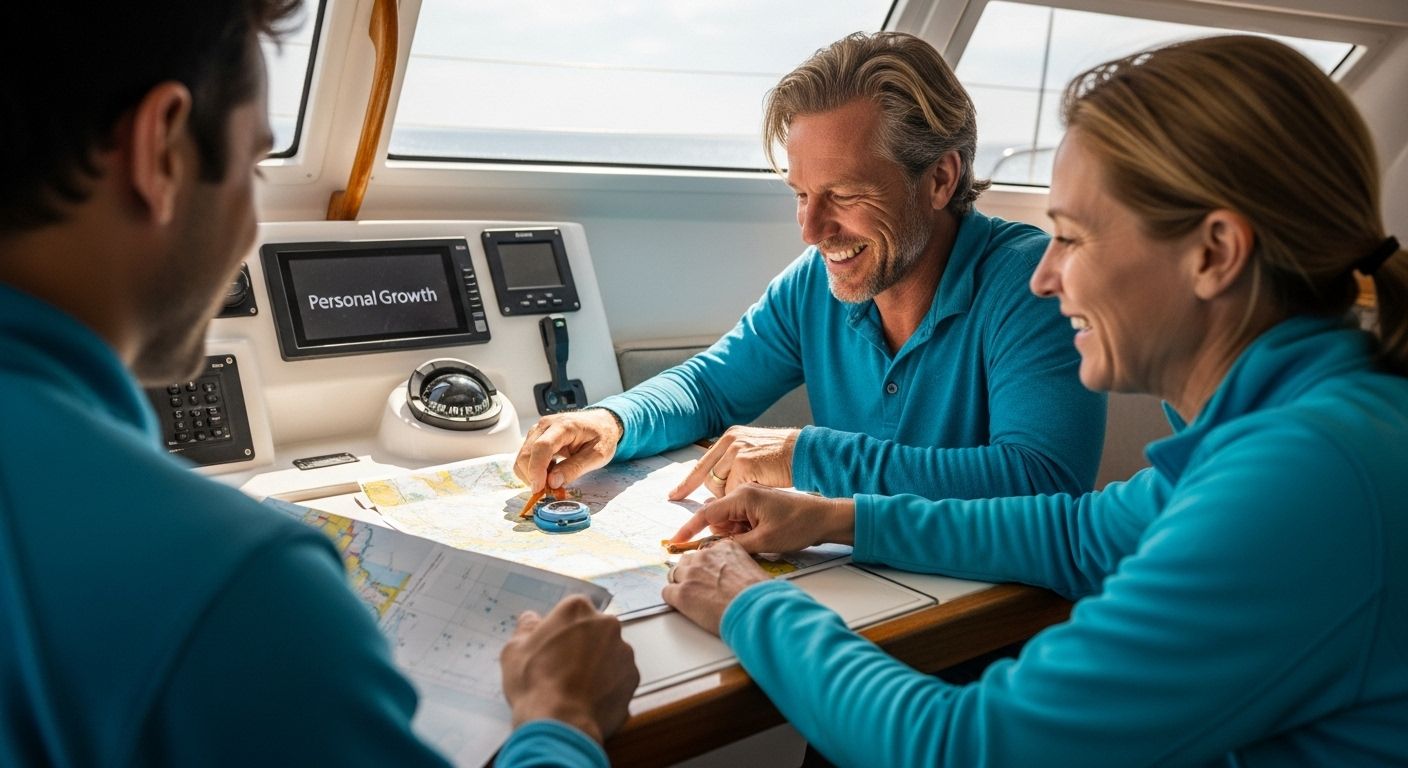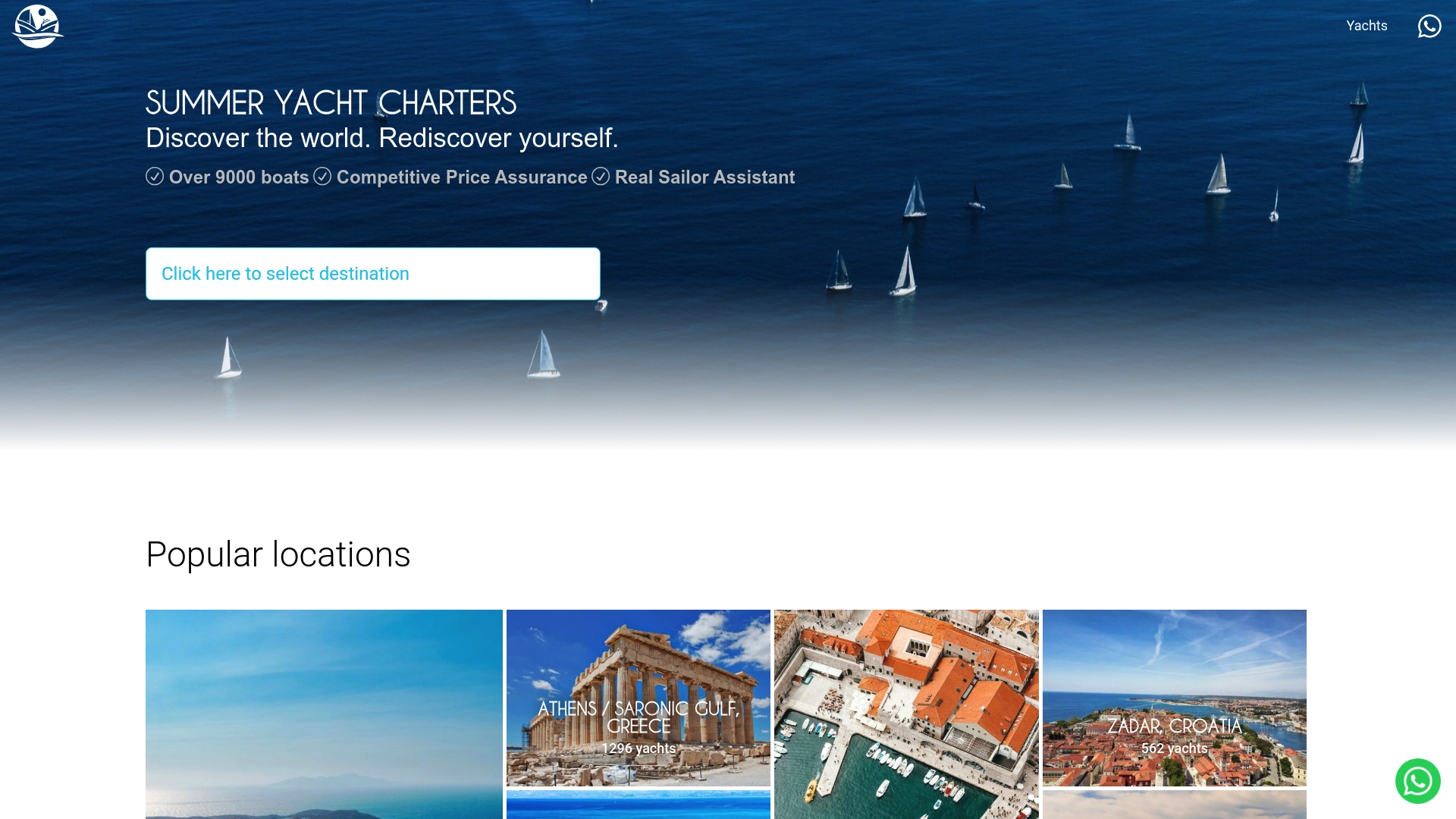Understanding Overcoming Seasickness: A Comprehensive Guide
Explore the causes and solutions for overcoming seasickness through in-depth explanations and insights.

Most sailors dread the unsettling wave of nausea that can hit out of nowhere while at sea. You might think it is a rare occurrence, but nearly 20 percent of naval personnel require medication and rest for seasickness. Even more surprising, the people who seem most at home on a boat are often the same ones who struggled the most in the beginning. What actually separates those who suffer from those who thrive is not luck or genetics, but something far more interesting.
Table of Contents
- What Is Seasickness And How Does It Affect You?
- The Science Behind Seasickness: Causes And Symptoms
- Why Overcoming Seasickness Is Important For Sailors
- Understanding Effective Strategies For Managing Seasickness
- Real-World Experiences: Tales Of Overcoming Seasickness
Quick Summary
| Takeaway | Explanation |
|---|---|
| Seasickness is sensory disorientation. | Conflicting signals from visual, vestibular, and proprioceptive systems lead to neurological confusion and symptoms of seasickness. |
| Key symptoms include nausea and dizziness. | Common symptoms of seasickness are nausea, vomiting, cold sweats, dizziness, and extreme fatigue, which can severely affect performance. |
| Preventive techniques can reduce symptoms. | Behavioural strategies like positioning, maintaining a fixed gaze, and ensuring good ventilation can dramatically lower the likelihood of experiencing seasickness. |
| Pharmacological interventions assist management. | Medications such as scopolamine patches, antihistamines, and natural remedies like ginger can significantly mitigate seasickness symptoms. |
| Gradual exposure fosters long-term adaptation. | Building resilience through systematic acclimatization and mindfulness techniques helps sailors develop tolerance and overcome seasickness successfully. |
What is Seasickness and How Does It Affect You?
Seasickness represents a complex physiological response triggered when your body experiences conflicting sensory inputs during maritime travel. Unlike standard motion sickness, seasickness emerges specifically from the unique environmental conditions encountered while sailing, presenting a multifaceted challenge for many maritime enthusiasts.
The Physiological Mechanism of Seasickness
The root cause of seasickness stems from sensory system disorientation. When you are on a boat, your visual system perceives movement differently from your vestibular system (inner ear), which manages balance and spatial orientation. According to research from the US Navy, this sensory mismatch creates neurological confusion, prompting your brain to interpret these conflicting signals as potential poisoning.
Key symptoms of seasickness typically include:
- Persistent nausea and vomiting
- Dizziness and vertigo
- Cold sweating
- Pale skin
- Extreme fatigue
- Reduced cognitive performance
Risk Factors and Individual Susceptibility
Not everyone experiences seasickness with equal intensity. Certain factors increase an individual’s likelihood of experiencing severe symptoms. Genetic predisposition, previous motion sickness history, and overall physical condition play significant roles. Women and children tend to be more susceptible, while some individuals demonstrate remarkable resistance to maritime motion disturbances.
Physiological responses vary widely, with some people experiencing mild discomfort and others facing debilitating symptoms that can completely undermine their sailing experience. Understanding these individual variations is crucial for developing effective prevention and management strategies for overcoming seasickness.
To help readers understand the various factors that contribute to individual susceptibility to seasickness, the table below summarises the main risk factors discussed in the article.
| Risk Factor | Description |
|---|---|
| Genetic predisposition | Inherited biological traits increasing sensitivity to motion |
| Age | Children are generally more susceptible than adults |
| Gender | Women typically experience stronger symptoms than men |
| Motion sickness history | Previous episodes make individuals more likely to feel seasick |
| Physical condition | Poor overall health may heighten vulnerability |
| Psychological stress | High stress levels can exacerbate symptoms |
The Science Behind Seasickness: Causes and Symptoms
Seasickness represents a fascinating neurological phenomenon where complex interactions between sensory systems create a profound physiological response. This intricate process reveals how human perception and bodily mechanisms react to unpredictable environmental stimuli during maritime experiences.
Neurological Sensory Conflict Mechanism
Sensory input disruption lies at the heart of seasickness. When sailing, your brain receives contradictory signals from three primary sensory systems: visual, vestibular, and proprioceptive. According to research in Frontiers in Neurology, these conflicting inputs trigger a sophisticated neurological response designed as a protective mechanism.
The brain interprets these mismatched signals as potential poisoning, initiating a defensive response that manifests through various physical symptoms. This evolutionary survival mechanism explains why nausea and disorientation occur, essentially preparing the body to expel a perceived toxic substance.
Physiological Symptom Progression
Seasickness symptoms develop through a predictable sequence, demonstrating the body’s complex response to maritime motion:
- Initial discomfort and unease
- Increasing nausea and dizziness
- Potential cold sweating
- Heightened respiratory rate
- Potential loss of balance
- Potential vomiting
Individual Vulnerability Factors
Not all individuals experience seasickness identically. Biological predisposition plays a crucial role in determining susceptibility. Factors influencing seasickness include:
- Genetic inheritance
- Age
- Gender
- Previous motion sickness experiences
- Overall physical health
- Psychological stress levels
Understanding these individual variations helps sailors develop personalized strategies for managing and mitigating seasickness, transforming a potentially challenging maritime experience into a more comfortable journey.

Why Overcoming Seasickness is Important for Sailors
Seasickness represents more than a mere inconvenience for sailors; it is a significant challenge that can compromise safety, performance, and overall maritime experience. Understanding and managing this physiological response becomes crucial for anyone serious about successful sailing.
Performance and Safety Implications
According to research from the Indian Journal of Occupational and Environmental Medicine, seasickness dramatically impacts a sailor’s operational effectiveness. Nearly 20% of naval personnel experience moderate symptoms that require medication and rest, while almost 2% encounter severe symptoms that completely incapacitate them.
Critical performance impacts include:
- Reduced cognitive function
- Impaired decision making
- Decreased physical coordination
- Potential safety risks during maritime operations
- Compromised ability to respond to emergencies
Psychological and Physical Wellness
Beyond immediate operational concerns, seasickness can significantly affect a sailor’s psychological well-being and long-term maritime engagement. Persistent motion sickness can lead to anxiety, reduced confidence, and potential reluctance to participate in future sailing activities.
Physiological stress triggered by seasickness activates the body’s defensive mechanisms, causing:
- Increased heart rate
- Elevated stress hormone levels
- Potential dehydration
- Muscular tension
- Mental exhaustion
Long-Term Maritime Adaptability
Successful sailors develop strategies for managing maritime motion challenges. By understanding and mitigating seasickness, individuals can enhance their resilience and enjoy more fulfilling sailing experiences. If you want to improve your sailing skills and preparedness, explore our comprehensive route planning guide for additional insights into maritime preparation.
Adapting to maritime environments requires patience, practice, and a proactive approach to understanding one’s physiological responses. Sailors who invest time in learning about seasickness and developing personal management techniques are more likely to transform initial discomfort into confident, enjoyable maritime adventures.
Understanding Effective Strategies for Managing Seasickness
Managing seasickness requires a strategic, multifaceted approach that combines preventive techniques, pharmacological interventions, and personal adaptation strategies. By understanding and implementing targeted methods, sailors can significantly reduce the impact of motion sickness and enhance their maritime experience.
The following table compares different strategies for managing seasickness, highlighting their features and benefits so readers can quickly understand their options.
| Strategy Category | Key Methods & Examples | Main Benefits |
|---|---|---|
| Preventive behavioural | Central positioning, horizon gazing, good ventilation | Reduces motion impact, eases initial symptoms |
| Pharmacological & nutritional | Scopolamine patches, antihistamines, ginger supplements | Direct symptom relief, accessible interventions |
| Adaptation & long-term | Gradual exposure, mindfulness, skill building | Builds resilience and confidence over time |
Preventive Behavioral Techniques
Prevention forms the cornerstone of effective seasickness management. According to the Mayo Clinic, strategic positioning and visual techniques can dramatically reduce susceptibility.
Recommended behavioral strategies include:
- Positioning yourself at the boat’s center where motion is minimal
- Maintaining a fixed gaze on the distant horizon
- Avoiding reading or screen activities
- Ensuring good ventilation
- Staying in open, well-lit areas of the vessel
Pharmacological and Nutritional Interventions
Medical and dietary approaches provide robust supplementary support for managing seasickness. Targeted interventions can help neutralize or mitigate physiological responses:
- Prescription scopolamine patches
- Over-the-counter antihistamines
- Ginger supplements
- Avoiding heavy, greasy meals
- Staying hydrated
- Limiting alcohol consumption
Adaptation and Long-Term Management
Successful seasickness management extends beyond immediate symptom control. Developing personal resilience involves gradual exposure, mental preparation, and continuous learning. Learn more about advanced sailing preparation techniques to enhance your maritime skills and confidence.
Practitioners recommend progressive exposure, mindfulness techniques, and maintaining a positive psychological approach. By viewing seasickness as a manageable challenge rather than an insurmountable barrier, sailors can systematically build their tolerance and enjoyment of maritime experiences.
Real-World Experiences: Tales of Overcoming Seasickness
Personal narratives of seasickness reveal a universal challenge that transforms from a debilitating condition into an opportunity for personal growth and maritime mastery. These real-world experiences demonstrate that with strategic approaches and persistent adaptation, sailors can successfully navigate and overcome motion-related challenges.
Professional Sailors and Initial Struggles
Professional maritime experts candidly share their early experiences with seasickness, highlighting that even experienced sailors were not immune to initial motion-related difficulties. Many report that their first sailing experiences were marked by significant discomfort, nausea, and reduced performance.
Common initial challenges included:
- Overwhelming physical discomfort
- Reduced confidence in maritime abilities
- Temporary inability to perform basic sailing tasks
- Psychological frustration and self-doubt
- Fear of future maritime experiences
Transformation Through Systematic Adaptation
Successful sailors unanimously describe a gradual acclimatization process. By implementing targeted strategies and maintaining a positive mindset, they systematically reduced their susceptibility to seasickness. Explore our comprehensive guide on learning advanced sailing techniques to understand how professionals develop maritime resilience.
Key transformation strategies involved:
- Incremental exposure to maritime environments
- Developing personalized coping mechanisms
- Practicing mindfulness and stress management
- Continuous learning and skill development
- Building mental and physical endurance
Psychological Resilience and Personal Growth
Beyond physical management, overcoming seasickness represents a profound psychological journey. Sailors consistently report that successfully managing motion sickness dramatically enhanced their overall maritime confidence, transforming an initial weakness into a strength.
These personal narratives underscore a critical insight: seasickness is not an insurmountable barrier but a challenge that can be systematically understood, managed, and ultimately conquered through knowledge, preparation, and persistent practice.

Ready to Sail Without Fear of Seasickness?
You have learned how seasickness can stand between you and the incredible freedom of life at sea. The struggle with motion and discomfort is real, but it should never stop you from exploring the Cyclades or planning a bespoke sailing itinerary. At Summer Yacht Charters, we understand how critical it is to feel prepared and confident before your journey. Our expertise in both route planning and vessel selection lets you take full advantage, even if seasickness has been a challenge in the past.

Explore our ITINERARIES for seamless journeys that suit all experience levels. Find inspiration for your adventure through our Cyclades collection or head straight to Summer Yacht Charters to find your perfect yacht. Start planning today and take the first step towards a confident, seasickness-free sailing holiday. The sooner you act, the sooner you will discover how fulfilling it feels to sail without worry.
Frequently Asked Questions
What causes seasickness?
Seasickness is caused by a sensory conflict in the body, particularly between the visual system, vestibular system (inner ear), and proprioceptive system. This disorientation leads the brain to interpret conflicting signals as potential poisoning, resulting in physical symptoms like nausea and dizziness.
How can I prevent seasickness while sailing?
To prevent seasickness, position yourself in the centre of the boat where the motion is minimal, keep your gaze fixed on the distant horizon, and ensure good ventilation. Avoid reading or screen activities, and stay in well-lit areas of the vessel for better comfort.
What medications are effective for managing seasickness?
Effective medications for seasickness include scopolamine patches, over-the-counter antihistamines, and ginger supplements. Staying hydrated and avoiding heavy meals can also help manage symptoms.
How can I build resilience against seasickness over time?
Building resilience against seasickness requires gradual exposure to maritime environments, practising mindfulness techniques, and maintaining a positive psychological approach. Regular training and personal coping mechanisms can transform initial discomfort into confidence during sailing.
Recommended
- How to Plan a Sailing Route: Expert Steps for Success – Summer Yacht Charters
- How to Anchor a Yacht Safely: Step-by-Step Guide – Summer Yacht Charters
- Learning to Sail as an Adult: Your Complete Guide – Summer Yacht Charters
- What to Wear Sailing: Clothing Guide for Every Sailor – Summer Yacht Charters
- Top Tips for Long-Haul Flights in 2025 for Adventurers
- How to Avoid Panic While Cenote Diving – The Cenote Guy